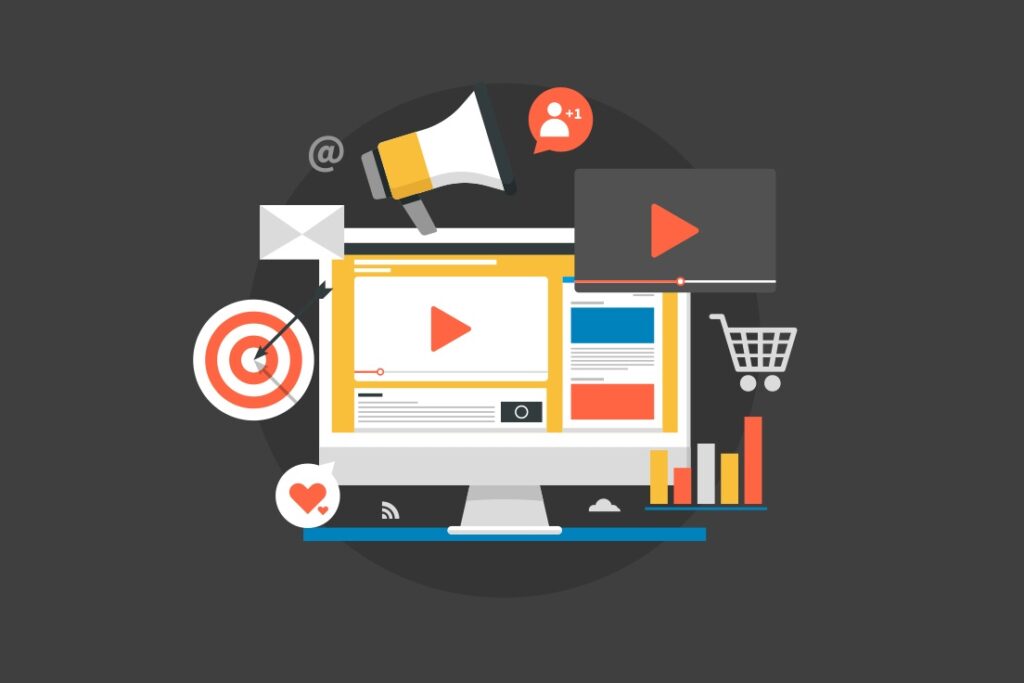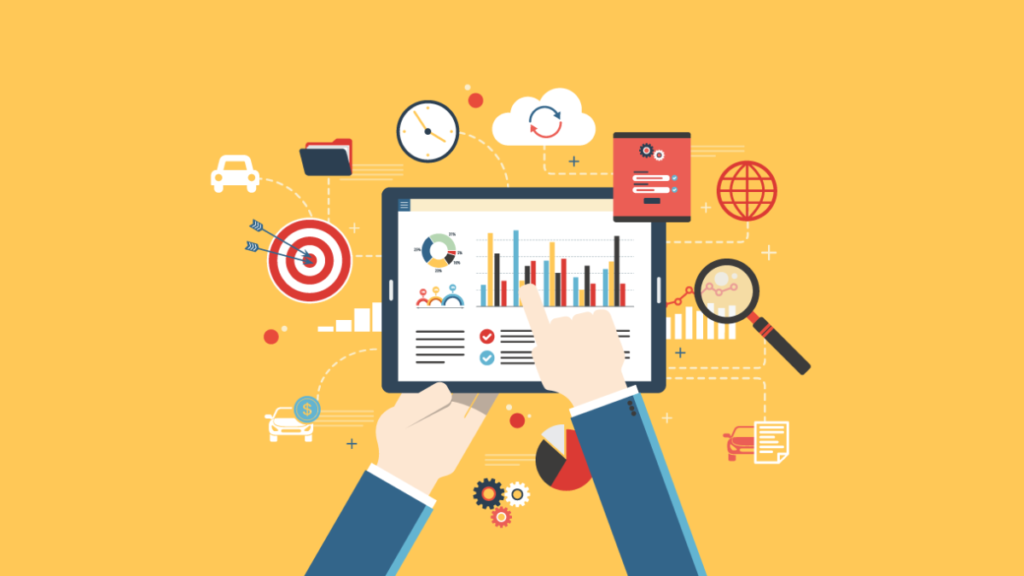Ever wonder who is behind those banner ads on the sites you visit the most? Or the Facebook ads we talk about for weeks after they’ve aired? The answer is media buyers.
When a brand gets a marketing budget, a portion of that typically goes to paid advertising. That’s where media buying comes in.
It doesn’t get much buzz in the marketing industry, but this process is responsible for the targeted ads we see today.
Let’s dive into this process of which so many of us are on the receiving end.
What is media buying?
Media buying is the process of purchasing ad space and time on digital and offline platforms, such as websites, YouTube, radio, and TV. A media buyer is also responsible for negotiating with publishers for ad inventory, managing budgets, and optimizing ads to improve campaign performance.
Whether they’re watching a TV show or scrolling through a website, media buyers get brands in front of their target market.
It’s not like social media where users come and find you. It’s an outbound strategy that is only effective if you have a well thought-out strategy. Rex Gelb, director of advertising and analytics at HubSpot, says one of the biggest mistakes brands make is not thinking through their marketing goals.


“Some ad placements might be good for one set of goals, but bad for another. Let’s say you’re an airline and your focus is impressions and awareness, rather than an immediate sale, you can buy a placement that is known to get cheap impressions,” he said.
Gelb continued,”Now, let’s say you’re a CEO who wants to promote a ‘letter to our customers.’ In this instance, what you’ll care about is cheap clicks. Buying cheap impressions, which made sense in the previous example, no longer helps you accomplish your goal.”
That’s why media planning is such an important step, as it helps you get the most out of your ads.
Nowadays, media buying is done in one of two ways:
- Direct buy – Media buyers forge relationships with publishers to negotiate ad inventory, e.g., working with a newspaper to have an ad placed in the upcoming issue.
- Programmatic buy – The buying process is done using automated technology.
Media Buying vs. Media Planning
Media buying and media planning fall into the same category but are two different processes. While media buying focuses on getting the most impressions from the right audience at the lowest cost, media planning focuses on the strategy behind the campaign.


During the planning phase, you determine what media will be most effective to reach a particular audience. So once media planning is complete, media buying follows. It’s also important to note that media planning isn’t solely for advertising, it’s for any media a brand puts out there.
However, in a small to medium-sized business, the job may be done by the same person or team.
How Digital Media Buying Works
With digital media buying, or programmatic buying, buying impressions is automated. The negotiation still technically happens but it’s done at a much quicker rate through open and private marketplaces.
The traditional approach, on the other hand, involves negotiations and relationship building with publishers.
There are three components to this automated buying structure:
- Demand-side platforms (DSP) where advertisers and ad agencies set up their campaigns, bid on ad inventory, and optimize their ads based on performance.
- Supply-side platforms (SSP) where publishers sell their ad inventory. It’s the publisher version of the DSP.
- The ad exchange marketplace where advertisers and publishers buy or sell ad inventory through real-time bidding (RTB).
RTB is not the only way to purchase impressions, you can also use private marketplaces, in which publishers limit who can participate in the auction. Another option is called programmatic direct, in which ad inventory is sold at a fixed cost per thousand impressions (CPM) with no bidding.


So what about ad networks? Well those platforms aggregate ad inventory from various publishers and match them to advertisers’ needs, serving as intermediaries. Think Google Adsense and Facebook Audience Network.
Digital media buying can be more cost-effective and allow teams to focus on ad performance instead of back-and-forth negotiations. However, with the latest restrictions on cookies and Apple’s AppTrackingTransparency (ATT) rollout on iOS 14, it’s unclear how that will affect the media buying space.
“With the upcoming release, Apple will be asking all of its users for permission to track when they open an app, and big ad networks like Facebook won’t be exempt,” said Gelb. “Needless to say, a lot of iOS users are going to opt out, which will have negative implications in terms of targeting and conversion tracking.”
“Nobody knows exactly what the impact will look like yet,” he added, “but we, in the industry, are crossing our fingers and hoping for the best.”
Media Buying Tips
1. Strategize
Before you launch your ad campaign, you’ll have to figure out a few things.
The first question is, what’s the goal of your campaign? Do you want more website traffic, brand awareness, social engagement? Aligning your team on one goal will help focus your efforts and better track your campaign’s success.
This leads us to key progress indicators (KPIs). You’ll need them to monitor your campaign and determine if any adjustments need to be made. Lastly, your campaign will need a budget. If it’s a long-running campaign, you may set a daily budget.
These steps are typically completed during the media planning phase. However, in some cases, media planners are also responsible for buying ads as well.


2. Identify your target and where to find them.
Your next step is determining who the campaign will target and which networks will be most appropriate to reach them.
For instance, let’s say a health-focused vegan dessert company wants to run an ad campaign next quarter and they want to target health-conscious, vegan consumers. The marketing team may want to advertise on YouTube videos with vegan-friendly content, fitness and nutrition websites, or even cooking and recipe pages.
When buying media, you can target audience by device, location, behaviors, interests, web browser, and more.
3. Set up your campaign
This step will vary depending on which media buying platform you are using.
However, when typically using a DSP, you will input your campaign details, such as campaign type, creative assets, budget, target audiences, and bidding strategies. So, once that process is complete, all there is to do is launch and wait for results to come in.
If you’re taking a direct approach, this will likely be a collaborative process between your team and your publisher’s account manager.


4. Track the results and optimize.
The most exciting (and possibly scariest) part of launching an ad campaign is tracking its performance.
As soon as it launches, you can start gathering data on how your ads are performing. In this stage, it’s important not to make decisions too quickly. You’ll want to gather enough data to get a full picture before switching gears.
Using the same vegan dessert company, let’s say they launched an ad campaign through Google’s ad network. They are using two static image ads and one video ad. After one week, they notice that the video ad is significantly outperforming the banner ads. The media buyer can decide to reallocate funds to that ad type and placement as it is generating better results.
A media buyer’s job is to maximize ad potential while staying within the budget. As such, if the ad isn’t delivering on expectations, adjustments can and should be made during the length of the campaign.
Conclusion
Media buying can be expensive but done correctly, it can be extremely profitable. The quality media buying process is highly nuanced and focuses on acquiring the optimal ad placement for maximum conversions.
Therefore, conduct thorough research on media buying trends and choose a reputed media buying partner that has experience in your niche and can offer various offline or online media buying services so that you can make the most of your time and resources.
Or, you can bring your media buying in-house by adopting the programmatic approach and using a self-serve or a white-label agency to implement your strategy.
Looking to run your programmatic media buying campaign in 2022? Contact us and We will help you.
